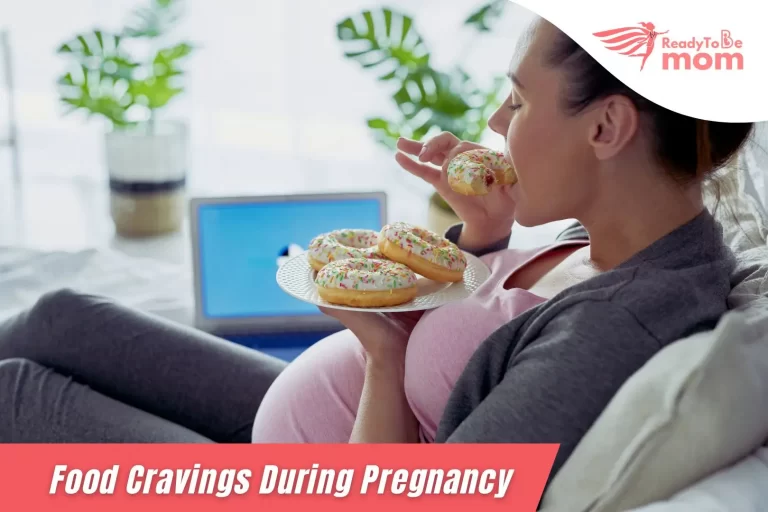Pregnancy cravings are intense desires for specific foods, often starting in the first trimester. They are driven by hormonal changes, nutritional needs, and emotional factors. Common cravings include sweet, salty, or sour foods, and while generally harmless, managing them is essential for maintaining a healthy, balanced diet during pregnancy.
When do pregnancy cravings typically start and end?
Pregnancy cravings can start as early as the first trimester, typically around 5 to 8 weeks of pregnancy, although every woman’s experience is different. For some, cravings may start later, around the second trimester. These cravings can be for a variety of foods, ranging from salty, sweet, or sour to unusual combinations. As hormone levels stabilize and nutritional imbalances are addressed, cravings usually decrease. However, each pregnancy is unique, and cravings may last throughout for some women or end sooner.
What causes food cravings during pregnancy?
Food cravings occur during pregnancy primarily due to hormonal changes that affect taste, smell, and appetite. During pregnancy, increased levels of hormones like estrogen and progesterone can alter the way you perceive certain foods, leading to cravings.
Additionally, cravings might be linked to the body’s need for specific nutrients. For example, a craving for dairy could signal a need for more calcium, while a desire for salty foods might be related to changes in blood volume and sodium levels.

How do pregnancy cravings change with each trimester?
Pregnancy cravings can vary across the trimesters.
- First trimester – In the first trimester, cravings often start around 5-8 weeks, usually mild but may involve stronger preferences for sweet or salty foods.
- Second Trimester – During the second trimester, cravings typically peak, with many women craving more diverse or intense flavours, ranging from comfort foods to unusual combinations.
- Third trimester – In the third trimester, cravings might taper off but can still persist, often focused on energy-rich or satisfying foods as the body prepares for birth. Research suggests that your food cravings will become less intense in the last trimester.
5 ways to reduce food cravings during pregnancy
- Eat balanced meals: Include dal, roti, vegetables, and curd for a nutritious, filling diet that curbs cravings.
- Stay hydrated: Drink water, coconut water, or traditional drinks like chaas (buttermilk) or nimbu pani to stay hydrated.
- Healthy snacking: Opt for roasted makhana, chana, fruits, or homemade poha for a satisfying snack.
- Adequate rest: Getting proper rest helps reduce stress-related cravings, which can lead to unhealthy eating.
- Engage in light physical activity: Practice prenatal yoga or take short walks to manage cravings and boost energy.
10 common food cravings during pregnancy
- Aam (mango): Many pregnant women crave raw or ripe mangoes, especially for their tangy or sweet flavour.
- Achar (pickle): The spicy and sour taste of pickles is a popular craving.
- Chaat: Tangy, spicy street foods like pani puri, bhel puri, and aloo chaat are frequently craved.
- Sweets: Traditional Indian sweets like gulab jamun, kaju katli, and rasgulla are often desired.
- Curd (dahi): Many crave the cooling and soothing effect of fresh yogurt.
- Spicy food: Dishes like biryani, samosa, or spicy curries are common cravings.
- Coconut water: Fresh, hydrating coconut water is craved for its refreshing taste.
- Lemon-based foods: Tangy flavors like nimbu pani or lemon rice are often craved.
- Paneer dishes: Soft, rich paneer in dishes like palak paneer or paneer tikka is a common craving.
- Fruits: Seasonal fruits like oranges, grapes, and watermelon are frequently craved for their freshness.
How to maintain safety during food cravings during pregnancy?
During pregnancy, managing food cravings while ensuring safety is essential. Opt for fresh, home-cooked meals to avoid foodborne illnesses. Limit street food or unpasteurized dairy products like raw paneer. If craving sweets, prefer homemade options like jaggery-based sweets over processed sugar. Ensure all fruits and vegetables are washed thoroughly to remove pesticides. Moderate intake of fried and spicy foods to avoid heartburn or indigestion. Eat smaller meals and snacks every couple of hours to avoid blood sugar drops that can trigger cravings. Always stay hydrated, and consult your doctor before introducing any new or unusual foods to your diet during pregnancy.
How to avoid excess weight gain during pregnancy?
- Opt for healthy snacks like fruits, nuts, and yogurt.
- Control portion sizes, avoid sugary and fried foods, and stay hydrated.
- Eating small, frequent meals can help manage hunger and cravings.
- Incorporate light physical activity if approved by your doctor.
A Pregnancy Experience: A Reflection
Shruti Gupte, PR Coordinator, Nagpur –
I had my first baby at 30, and during the early part of my pregnancy, everything was going smoothly. I was staying with my mom, and life was pretty much on track. Then, right at the end of my first trimester, something happened that I’ll never forget. My brother came home one evening with some ice cream. I had a little after dinner, and suddenly —this wild craving hit me out of nowhere!
I immediately asked my husband to get me a big tub of chocolate chip cookie dough ice cream. And oh my gosh, it was heavenly! After that, the fridge basically became my best friend. I’d happily trot over to it, scoop out some ice cream, and indulge at least four times a day. It was my daily ritual!
But, of course, by the end of that week, I started sneezing and coughing. My husband and mom were totally freaked out and immediately put me on a strict “ice cream diet”—just two small spoons of chocolate ice cream once a day. Not nearly enough, but looking back, it was probably for the best!
Read More On
Food Cravings and Aversions are common signs of pregnancy
Pregnancy Symptoms: White Vaginal Discharge Explained
Breast changes & Frequent Urination during early pregnancy
Missed period & other Early Pregnancy Signs






